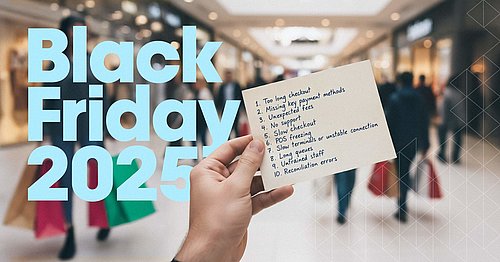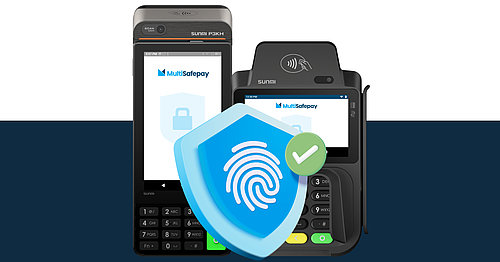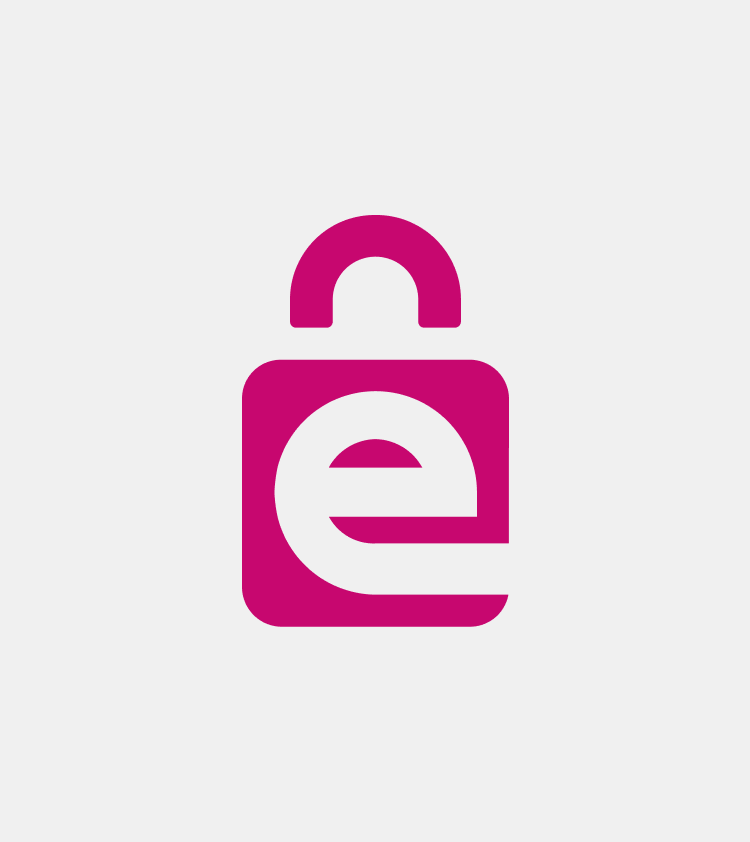Black Friday security: Top tips to keep your customers and your business safe online and in-store
From payment flows to fraud prevention, every part of your operation is under pressure. While customers are looking for the best deals of the season, you need to ensure they can buy quickly, confidently, and securely — whether online or in-store.
At MultiSafepay, we know how demanding this time of year can be. You’re managing traffic spikes, product availability, last-minute campaigns, all while trying to deliver a seamless experience to your customers.
That’s why we’re here not just as your payment provider, but as a partner that works alongside you to help you grow safely and sustainably.
In a time when fraud attempts are growing in volume and sophistication, securing your digital and physical touchpoints isn’t just a technical necessity: it’s a trust factor that drives conversions, reduces risks, and protects your brand.
That’s why we’ve prepared a checklist of essential security practices to help you face Black Friday 2025.
But first, here’s what’s changed this year and why security should be a top priority right now.
Looking ahead: New threats and key trends in 2025
In 2025, fraud is evolving faster than ever, and so must your prevention strategies. Attackers are increasingly leveraging artificial intelligence, deepfake technologies, and large-scale automation to exploit even the smallest weaknesses in your systems. Among the most notable trends:
Biometric spoofing: Fraudsters are simulating facial or voice recognition data to bypass identity verification.
AI-generated phishing and impersonation scams, often indistinguishable from legitimate communication.
Replay attacks that mimic legitimate transactions in real time to trigger unauthorized payments.
Device farms and session hijacking, which simulate human interactions on a massive scale.
These aren't distant threats — they're happening now. That’s why many businesses are turning to real-time behavioral analytics, continuous authentication, and AI-driven anomaly detection to keep up.
At MultiSafepay, we continuously monitor these evolving threats and adapt our risk management tools accordingly. Through ongoing platform updates, security enhancements, and fraud prevention measures, we aim to help merchants stay protected while maintaining a smooth and secure purchase experience for their customers.
Coming soon: PSD3 and PSR
The next evolution in EU payment regulation is on the horizon. The Payment Services Directive 3 (PSD3) and the new Payment Services Regulation (PSR) are expected to take effect in 2026, introducing stricter rules on authentication, fraud monitoring, and consumer protection.
While the full implementation is still ahead, now is the time to prepare.
We already covered this topic: read our latest article and discover how PSD3 and PSR will impact your business.
Black Friday 2025: tips for enhancing online and in-store security
Update all plugins and security tools
The first step in protecting both your business and your customers is to update all integrations, plugins, and security tools on your site. This is crucial for two main reasons.
Firstly, a properly updated site is a secure site. Regular updates help fix bugs and known vulnerabilities and exploits, safeguarding you against commonly used routes by hackers.
Additionally, a securely updated site performs better in terms of speed and user-friendly navigation, helping you create an improved buying experience that is likely to lead to increased conversions and sales. Speed leads to higher sales.
What better opportunity than Black Friday to implement these essential updates?
In particular, they should cover:
Ecommerce platform: Ensure it's updated to the latest version, including all integrations, themes, and CMS security plugins for vulnerability monitoring. Also, remember to disable any unnecessary, outdated, or deprecated plugins and libraries.
Firewalls and protection devices: Update your firewall and test your DDoS protection by checking for injection paths and reviewing load capacity.
Monitoring alerts: Check that your alerts and monitors are up and running.
SSL certificates: Ensure your SSL certificates are valid to encrypt data transmitted between users' browsers and your server.
Incident response readiness: Confirm that you have a playbook for security incidents, escalation procedures, and clearly assigned roles in case of breach or system failure.
Implement two-factor authentication (2FA) by requiring users to undergo dual verification when accessing your site. This process combines a password or PIN with a code sent to their mobile phone, enhancing security and protecting sensitive personal data from hackers.
Enable session monitoring & auto timeout: Set session expiry rules and detect unusual behaviors such as concurrent sessions from different IPs.
Use a Web Application Firewall (WAF) with adaptive rules and rate limiting: Block common attack patterns like SQL injection or XSS and prevent brute-force login attempts.
Next to the updates, review and implement additional measures to prevent unauthorized access:
Limit access roles: Restrict the roles of employees who have access to your site to minimize risk.
Use the principle of Least Privilege: Grant users the minimum access necessary to perform their daily tasks, reducing the potential impact of unauthorized access or misuse.
Review user accounts: Regularly remove inactive user accounts and those that haven’t logged in recently to maintain a secure environment.
Control access attempts: Limit the number of login attempts for both customers and staff.
Implement CAPTCHA: Introduce a CAPTCHA check (such as a simple image recognition test) to verify that users accessing your site are human and not bots.
Implement strong passwords: Encourage the use of strong passwords that consist of at least 12 characters, including a mix of uppercase and lowercase letters, numbers, and special characters. Passwords should not include easily identifiable personal information, such as names or birth dates, and must be unique—never reused across different accounts or systems. Provide simple guidelines during the account registration process to help customers create strong passwords.
Educate your team on phishing and social engineering attacks, especially in the days leading up to major campaigns.
Increase protection for credit card payments
When it comes to credit card payments, the foremost rule is to ensure full compliance with the PCI DSS (Payment Card Industry Data Security Standard). This set of guidelines is specifically created to secure payment cards and applies to all businesses that process card payments and store sensitive card data.
Make sure you’re aligned with PCI DSS 4.0, which includes updated requirements for ecommerce platforms, stricter authentication controls, and better bot protection.
Merchants can leverage MultiSafepay’s PCI DSS certification by integrating with our hosted components or redirecting customers to our secure payment environment. In these cases, they are still required to complete the relevant PCI SAQ (Self-Assessment Questionnaire), but the overall PCI scope is limited.
Merchants who process card data directly on their own systems—without using certified components—are fully responsible for PCI compliance and may require their own certification.
While card payments should always be fast, secure, and seamless, there are a few key options—supported by MultiSafepay—that can help protect credit card data and optimize the checkout experience during Black Friday:
Tokenization: For businesses that support it, tokenization allows you to store customer card data securely by converting it into a unique token. This is especially useful for recurring payments, as it prevents sensitive data from being exposed.
As a strong alternative for non-recurring transactions, solutions like Click to Pay offer a secure and frictionless checkout experience. The payment method developed by Visa and Mastercard enables customers to pay quickly without manually entering card details, and is becoming increasingly accepted across a wide range of ecommerce platforms.
Similarly, digital wallets such as Apple Pay and Google Pay also rely on tokenization to protect cardholder data. By replacing actual card numbers with tokens, they ensure that sensitive payment information is never shared with the merchant, while providing a fast and seamless checkout experience.
3D Secure 2.2: MultiSafepay supports 3D Secure 2.2 by default, adding an extra layer of fraud protection to your transactions. The improved authentication process—including biometrics or SMS verification—is fully integrated into the checkout, helping reduce fraud while maintaining high conversion rates.
Partnering with an acquirer and processor like MultiSafepay facilitates direct communication with major credit card networks, ensuring that the entire verification and authentication process is handled smoothly within your checkout.
Reduce the risk of chargebacks
Chargebacks tend to increase during peak sales periods due to higher instances of fraud—where unauthorized transactions occur—or simply because a greater volume of purchases can lead to payment errors and customer dissatisfaction, resulting in more refund requests.
To mitigate the risk of chargebacks, consider partnering with a payment service provider that actively monitors transaction statuses and can respond promptly if a chargeback is initiated.
Additionally, make it easy for customers to reach out by providing clear communication channels. Enhance your customer service to ensure they receive all necessary information and assistance in case of any issues.
Perform frequent backups and activate recovery procedures
Regular backups and recovery procedures become even more crucial during Black Friday. During peak shopping seasons, your site's traffic may increase exponentially, making it more susceptible to malfunctions, fraud, and technical errors.
Regularly backing up your site allows you to easily restore a previous version, minimizing potential losses. Additionally, having recovery procedures in place helps reduce downtime, which can be detrimental to sales. Make sure to test your restore procedures in advance, having a backup is only useful if you can rely on it under pressure. In parallel, consider implementing a high-availability environment or a failover system that ensures business continuity in the event of an attack or system crash.
Importantly, backups and recovery procedures enhance your site’s security and protect your customers' personal data and payment details. Having a clearly defined incident response plan, complete with escalation procedures and assigned responsibilities, can dramatically reduce response time and reputational risk. Implementing a robust emergency management system not only safeguards your sales but also bolsters your reputation.
Perform daily reconciliation
Monitoring the correspondence between your account movements, issued invoices, expenses, and received payments is particularly critical during Black Friday. Daily reconciliation allows you to identify any anomalies in transactions, whether due to fraud attempts or simple errors. Additionally, running daily reconciliation during Black Friday not only provides a better up-to-date overview of your business but also offers real-time insights into the performance of your promotional campaigns.
Although reconciliation can be a complex process—often fraught with manual errors—you can simplify it by working with a payment provider that enables you to manage all your transaction and customer data in one place. This approach streamlines your accounting and reconciliation operations, saving you time and enhancing operational efficiency.
Enhance Your Inventory Management
To effectively manage the surge in demand from customers during Black Friday, it’s essential to implement strategic inventory management practices.
By accurately forecasting sales trends, you can ensure that your warehouse is stocked with the most sought-after items while minimizing excess inventory of less popular products.
One key improvement for 2025 is implementing real-time tracking not only to monitor stock levels, but also to lock inventory during the checkout phase, preventing overselling and potential customer dissatisfaction.
Additionally, maintaining a flexible supply chain will help ensure timely deliveries, ultimately enhancing customer satisfaction. Consider flagging high-value or low-stock items for manual review to detect potentially fraudulent orders before shipment.
In high-volume periods like Black Friday, your inventory management system becomes a critical part of your fraud prevention strategy as much as your logistics one.
Protect your payment terminals
POS devices handle transactions just like your online store and therefore they need to be secure and are a target for fraud.
Given the sensitive data they handle and their advanced technological features, POS payment terminals are valuable assets and should be treated as such when implementing security measures for Black Friday. Here are some essential steps to prevent them from falling into the wrong hands:
Constant updating: Just like the plugins and integrations of your ecommerce site, POS terminals require regular updates.
Restricted access: Ensure that only authorized and trusted personnel have access to the POS terminals. This includes training staff to never leave mobile devices unattended.
Secure and segmented networks: Connect your POS terminals to a dedicated, encrypted network, and segment them from the rest of your infrastructure to minimize exposure to malware, internal breaches, or interception. Use network monitoring tools to detect suspicious activity in real time.
Tamper detection: Use terminals equipped with tamper-evident features and automatic shutdown protocols in case of unauthorized access attempts.
End-to-end encryption: Ensure that data is encrypted from the point of interaction (PIN entry) through to the acquirer, minimizing the risk of interception.
Install surveillance systems at your store
Installing a comprehensive surveillance and security system—complete with cameras and alarms—is essential for any retail store, not just during peak periods like Black Friday. Ensuring the safety of customers, staff, and goods must be a priority 24/7 throughout the year.
Cameras should be strategically placed near all entrances and in the warehouse, while doors and windows should be secured with an effective alarm system.
Modern systems go beyond high-resolution footage. Look for solutions that integrate with other security measures, offer remote access via mobile devices, and include AI capabilities to analyze video feeds in real time, identifying suspicious behavior, loitering, or unusual movement patterns.
Ensure doors and windows are secured, and that video recordings are properly archived and easily retrievable in the event of theft or other incidents. Always comply with privacy regulations such as GDPR by informing both staff and customers of video surveillance through clear signage and internal policies.
Train your staff on security measures in-store
During busy periods like Black Friday, sales events, or the holiday season, it's crucial to implement robust security measures at your physical point of sale. However, especially in larger stores, it’s impossible to monitor every movement alone. Regularly training your staff is essential to ensure the safety of both customers and your space. Your team should be equipped to:
Prevent theft: Train staff to detect suspicious behavior to proactively prevent theft.
Identify tampering: Ensure they can promptly recognize if a POS terminal has been compromised by skimming devices, helping to prevent credit card cloning.
Perform daily reconciliation: Inform them about the importance of daily reconciliation to catch discrepancies early.
Secure cash: Instruct them on proper procedures for securing cash at the end of each workday.
Monitor inventory: Encourage consistent use of stock and inventory monitoring systems so any shortages are quickly identified.
Manage lighting: Especially during evening hours, ensure that the lighting inside and outside the store is adequate for safety.
Activate alarms: Remind them to activate the alarm and securely lock all entrances at the end of the day and consider additional night-time protections like armored blinds.
Identify social engineering attempts: Train staff to recognize when someone may be impersonating a manager, courier, or technician in order to gain unauthorized access to devices or areas.
Respond to incidents: Establish clear protocols for staff to follow should a security breach, theft, or fraud attempt occur, including who to alert and how to escalate the situation quickly.
By empowering your staff with the knowledge and skills to handle these responsibilities, you can significantly enhance the security of your store.
Why tighten security measures during Black Friday?
There are countless reasons to prioritize security during Black Friday.
Here are the main benefits you’ll gain:
Process optimization: An up-to-date and secure system ensures a smoother, faster, and more enjoyable purchase experience for your customers.
Avoiding fraud and data breaches: Preventing these incidents is crucial, as they can have disastrous consequences for both you and your customers, negatively impacting your business in terms of costs and reputation.
Saving time and money: Implementing robust security measures can save you from incurring the costs associated with repairing and restoring systems—or worse, replacing unrecoverable devices.
Increased customer confidence: A smooth and secure shopping experience encourages customers to return. Enhancing security boosts their trust in your company, leading to positive word of mouth, glowing reviews, and repeat purchases.
Enhanced brand awareness: A fraud-proof buying process, both online and offline, coupled with positive customer feedback, will elevate your brand’s popularity.
Future-proof compliance: Strong security practices today will make it easier to adapt to upcoming regulatory changes, such as PSD3 and PSR, which aim to raise standards in fraud prevention, authentication, and consumer protection across the EU.
As a final note, never take the security of your systems and customers for granted. It takes very little to damage the excellent reputation you've built over time with significant effort and resources.
Ready to protect your business and grow securely this Black Friday?
We know how much work goes into preparing for Black Friday and we’re here to support you every step of the way. From optimizing your checkout flows to preventing fraud and managing reconciliation, security isn’t just about protection — it’s about building trust, improving performance, and giving your customers a reason to come back.
That’s why this year we’ve created “We’ve got your back”, a dedicated content hub for merchants who want to stay one step ahead during Peak Season, or who simply have questions about the resilience of their payment infrastructure.
Need a second opinion on your payment security strategy? Want to explore tools that make reconciliation easier or reduce chargebacks?
Let’s talk! We’re here to help you face Peak Season with confidence, clarity, and a partner by your side.



